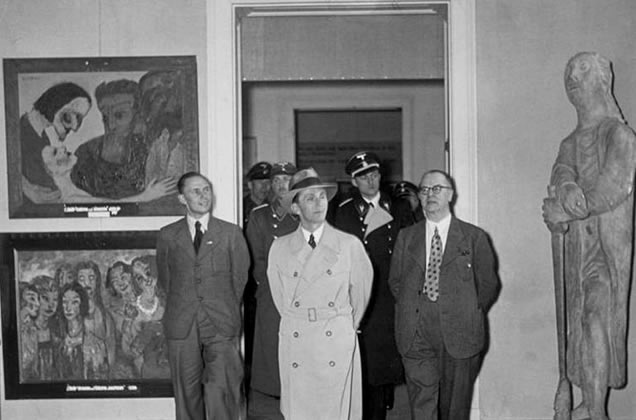Nearly 1,500 paintings by masters including Picasso, Matisse and Chagall, confiscated by the Nazis and sold by persecuted Jews, were discovered in an apartment in Munich, a German newspaper has reported.
The prosecutor’s office of Augsburg, in southern Germany, issued a swift ‘no comment’ when asked by German news agency dpa if the information disclosed by the German weekly Focus was correct.
According to the newspaper, which claims to have conducted a detailed investigation, the works by the great masters of the twentieth century, including the Germans painters Emil Nolde, Franz Marc, Max Beckmann and Max Liebermann, are estimated at around one billion euros. They were stored in the apartment of an octogenarian.
The paintings were discovered by the German police in 2011, but the discovery was not made public until the Focus article.
Focus claims that since the discovery of paintings by the police, an expert on ‘degenerate art ‘, Meike Hoffmann, a professor at the Free University of Berlin, has been searching for the provenance of the original works and attempting to identify their owners or their descendants.
For now, Ms. Hoffman could not be contacted by AFP for comment.
According to Focus, the octogenarian is Cornelius Gurlitt, the son of a famous German collector, Hildebrand Gurlitt, who had bought the paintings in the ’30s and ’40s.
These works were either confiscated by the Nazis from Jews and then resold or sold at low prices by fleeing Jews. Some may have been confiscated because the third Reich regarded them as ‘degenerate art’, as opposed to the official art Hitler so adored.
Hildebrand Gurlitt, initially disliked by the Nazis because of a Jewish grandmother, knew through his countless contacts and his artistic skills how to make himself indispensable to the high-ranking Third Reich officials.
He was particularly well in with the Minister of Propaganda, Joseph Goebbels, helping to sell to foreign countries ‘degenerate art’ that had once hung in German museums.
After the end of World War II, Hildebrand Gurlitt defended his contacts with officials of the Third Reich, highlighting his Jewish origins and the fact that was never a member of the Nazi party. He also claimed to have helped many Jews and persecuted artists by buying their works.
For nearly fifty years, Cornelius Gurlitt, an unemployed bachelor, stored the paintings in dark rooms of his apartment, filled with trash.
Over the years, he sold some of the paintings and lived off the proceeds. Among the works found was a painting by Henri Matisse that had previously belonged to Jewish collector Paul Rosenberg who had been forced to abandon his collection when he fled Paris.
In 2011, the German police raided Cornelius Gurlitt’s apartment, because he was acting suspiciously, and so discovered the paintings.
The Augsburg prosecutor’s office finally broke their silence, when they held a press conference to confirm that revelations by Focus were correct: over 1,400 works of art had been discovered by chance during a search in February 2011 in Gurlitt’s Munich home, in rooms littered with garbage.
Hoffmann said: “These works are of outstanding quality, quite extraordinary and their discovery has obviously caused a feeling of incredible happiness.”
The hunt continues for the mysterious Cornelius Gurlitt…
PHOTO: Goebels visiting the ‘degenerate art’ exhibition in 1938. Bundesarchiv, Bild 183-H02648/CC-BY-SA







